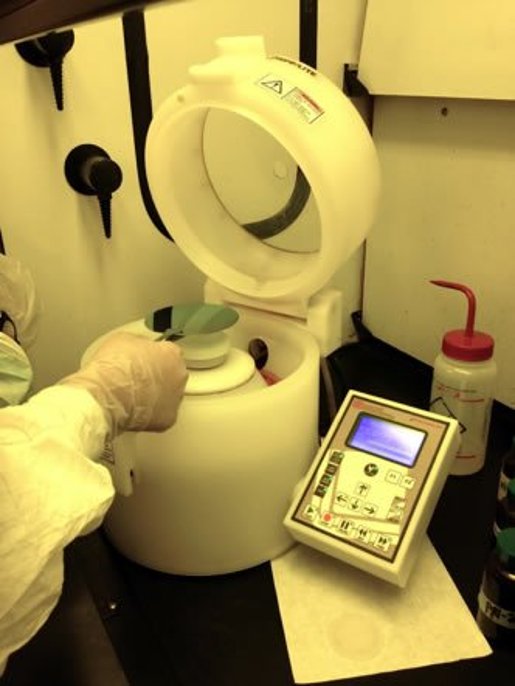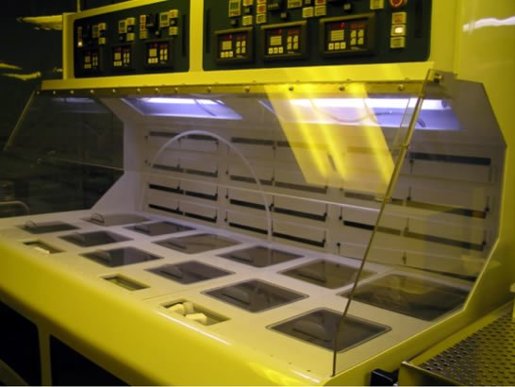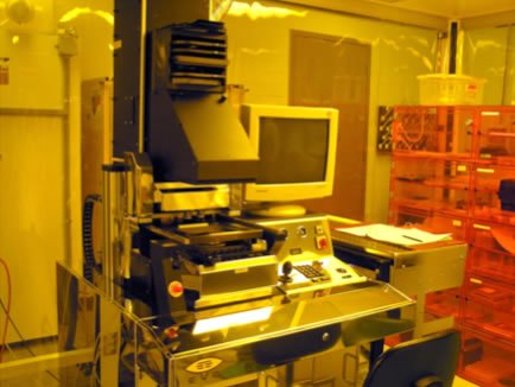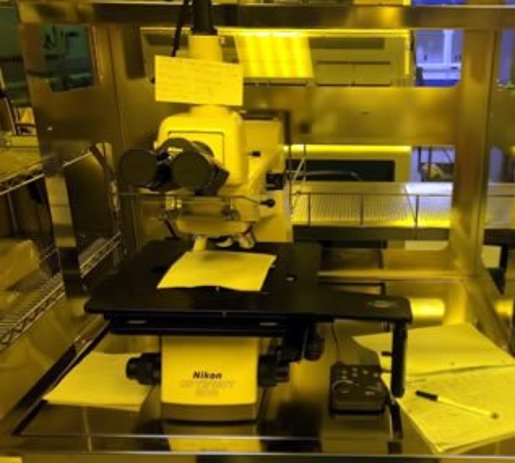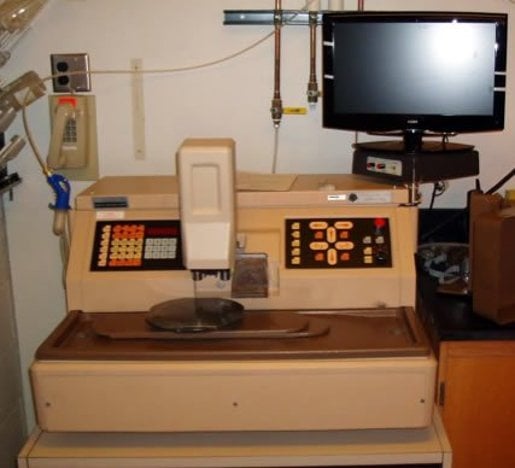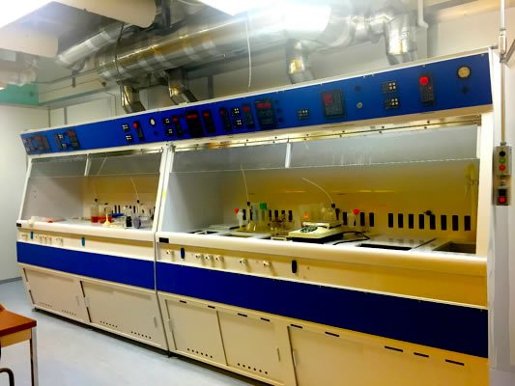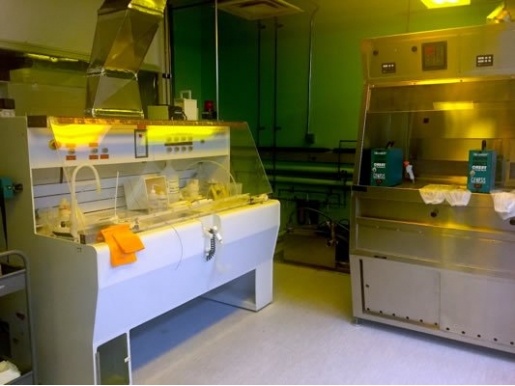Minerals and Materials Engineering Building (M&M) 429
The cleanroom is a Class 1000 softwall cleanroom with a wet chemical bench, polymer spinner, EVG 620 mask aligner, Nikon Optiphot 200 microscope, vacuum oven, and hotplates inside.
Outside of the cleanroom is a fume hood for fabrication of porous silicon, a dicing saw, and additional wet bench space.
General
Laurell Spinner
The Laurell spinner is used to apply photoresist or other polymer films to a wafer or sample.
Support Features
- Vacuum chucks for samples from 4 mm chips to 100 mm diameter wafers
- Provided photoresists - Shipley 1827, Shipley 1813, Futurrex NR9-1500P
- Hot plate
Wet Bench
The wet bench facilities are made of polypropylene; therefore, they are compatible with high temperature RCA processing, including hydrofluoric acid. The wet bench includes an aspirator and an automatic drain. The bench is connected to an acid neutralization system which makes it easier to dispose of RCA chemicals.
Support Features
- Dry nitrogen
- Deionized water
- Chemicals for cleaning, etching, and developing
- Ultrasonic bath
- Acid neutralization system
- Heated baths
Photolithography
EVG 620 Mask Aligner
Our EVG 620 is a contact mask aligner with a 365 nm UV source that can resolve 1 𝜇m features. The system can handle wafers up to 150 mm in diameter. The mask aligner can also be used to transfer patterns from a mylar transparency to a glass mask.
Support Features
- 365 nm UV source
- Lamp intensity meter
- Mask holders for 5”x5” and 7”x7” mask
- 4” and 6” sample vacuum chucks
Nikon Optiphot 200 Microscope
The microscope is used to verify lithography patterns after development, as well as the cleanliness of the substrate. It has a CCD camera so the user can see the details on the computer. It can offer a Pseudo 3D view (Nomarski Prism).
Support Features
- Multiple objectives 10x, 20x and 50x
- CCD camera for image capture
- Nomarski Prism
Vacuum Oven
A vacuum oven is available for curing samples up to 275°C. Additionally, the vacuum can be used for degassing solutions, such as PDMS, before pouring and also after pouring.
Support Tools in M&M 429
MA1000 Dicing Saw
The MA1000 dicing saw allows for the dicing of pre- and post-fabricated wafers and samples up to a maximum diameter of 150 mm. The system is computer controlled, but the user is required to program the dicing parameters. Samples can be aligned using a built-in microscope; however, alignment features need to be spaced 50 mm apart.
Support Features
- Dry nitrogen
- Dicing blades for silicon and glass
- Mounting tape for silicon and glass
Additional Chemical Benches
Support Features
- Space for wet chemical work
Porous Silicon Facilities
A work space in the cleanroom has been developed for the etching of silicon in the formation of porous silicon.
Contact Professor Paul Bergstrom for more information.
Support Features
- Wet bench
- Dry nitrogen
- Acid neutralization system
- Electrodes
- Power supplies
Spin Rinse Dryer
The spin rinse drier is available for rinsing and cleaning whole four-inch wafers that fit in a standard cassette. The outlet water pH is monitored, and therefore the rinse process can be directly controlled by the program. Additionally, wafers can be heated while spinning to ensure completely dried and residue free cassette and wafers.
Support Features
- Four-inch wafers
- Full and partial cassettes
- Dry nitrogen
- pH monitor
- Fully programmable processes
